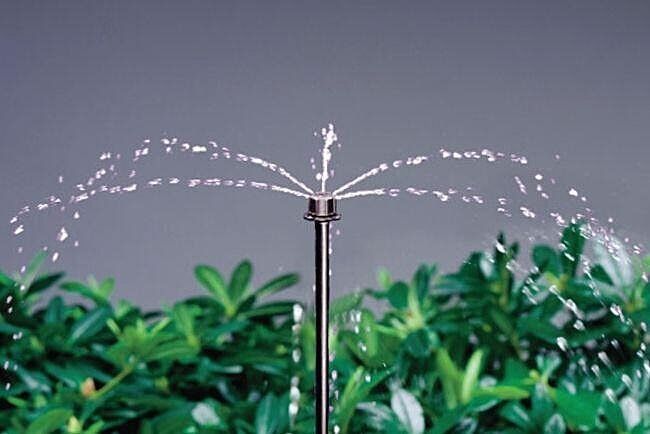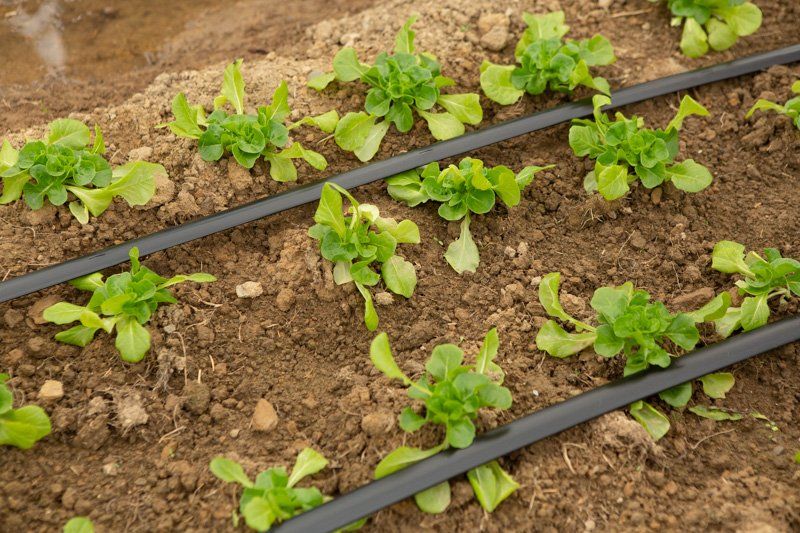Drip irrigation
Drip irrigation refers to the method of slow and deliberate application of irrigation water to landscape plantings. It also refers to a myriad of components utilized in both agriculture and landscape that provide the most efficient use of water with little to no loss due to evaporation.
To answer the first question that comes to most minds here – why isn’t this the only irrigation we use? With our natural resources waning and water becoming a scarce commodity in some parts of the world why would drip irrigation not be the only means of irrigation?
Get Started
Drop us a line and we’ll get back to you!
Contact Us Today
Why Drip Irrigation?
The answer is that it is cost prohibitive and requires more maintenance than standard sprinkler irrigation. The ROI just does not equate with the cost of water. YET!
Drip works well in residential settings where the planting remains sparse and some require little to no water at all (xeriscape). It will also work in beds where the planting is dense and drip tubing can be ran. Drip irrigation is also be widely specified and used in smaller turf strips where it makes sense to use given the minimal runoff and water waste over short-throw sprinklers.
The main difference in drip irrigation over turf sprays is the emission device. Drip irrigation utilizes very small orifices from which the water passes through and enters the landscape area. It is called drip because the water slowed down and released through a small opening should appear to ‘drip’ from the component. This dripping and relatively slow ‘speed’ of the water – couple with delivering it precisely within or over the root system is the main factor in its efficiency.
Note: the drip delivery of water is best received in porous and non-clay soils. This is also a determining factor in where drip is used throughout different climates.

What Are The Types of Drips in Residential?
There are 2 different types of drip available and seen throughout the residential market.
- Drip tubing – less widely used in the southwest – is similar to soaker hose (but it is definitely not soaker hose!!) Drip tubing has small emitters within a ½” tubing that when ran in parallel and defined spacing will drip an area of landscape with relatively high efficiency.
- Point-Source drip – most of the drip irrigation in the SW – is characterized by a plastic lateral snaking throughout the landscape that carries the water and either individual or multi-port components that provide a conduit to a small ¼” line (referred to as spaghetti tubing) that goes directly to the base of each plant.
Both the drip tubing ‘ports’ and the single emitters on spaghetti tubing are rated for flow… Designers will match this flow with the type and eventual size of the plants to best provide the needed irrigation.
The number of emitters or total flow of the line will depend on the size of your water meter or pump.
What We Do Personally?
Drip irrigation also differs from turf in the components after the valve. Tur spray and drip valves are interchangeable but drip irrigation requires a filter and pressure regulator to work best. Given the size
of the orifices, the water flowing through the system must remain as clean as possible or clogs will occur on a regular basis. This filter will require cleaning once per year and unless you are using a reclaimed source, should never clog.
The pressure regulator will reduce the incoming pressure of the water to a more manageable speed to eventually slowly drip out of the emitters.
Additionally, all drip zones will require a flush valve at the termination of all runs. This will allow annual flushing of the system of any particulates and again – ensure the system remains clog-free.
Drip tubing also requires an air-relief valve.. This valve will allow all of the air to escape the drip tubing immediately upon the valve being turned on by the controller. This speed of flushing allows the system to work as intended immediately as opposed to slowly releasing the air pent up in the lines since its last cycle.

Troubleshooting Tips
On Drip Irrigation
- Drip irrigation should leave ‘wet circles’ throughout your landscape.. not puddles. Puddles usually are an indication of a leak.
- If you have a heavy critter or deer population drip lines – when chewed through – provide an excellent source of water for the animals. In these areas it will be best to inspect the system monthly – and in times of high heat – weekly.
- Drip irrigation and sprinkler irrigation can be converted one to the other without a complete tear out. Consult your local irrigation professional should you be concerned your irrigation is not the most efficient for your landscape.

